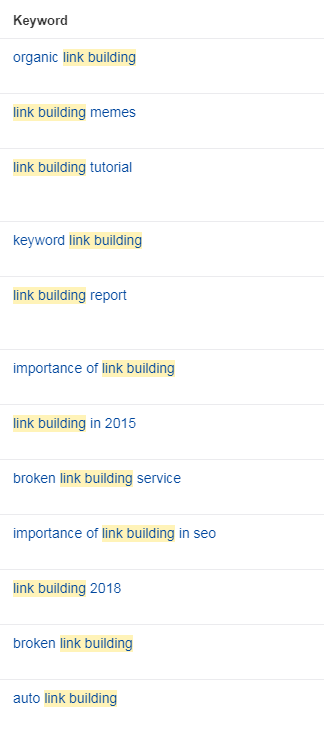How to Use Keyword Mapping for SEO
Every SEO strategy has one foundational thing in common – keywords. It’s almost always the starting point of our strategies since we use them as the starting point of our strategies where we apply the keywords in almost every part of the strategy. There are a lot of technicalities when it comes to keywords, but we often forget how the keyword or topic holds massive opportunities that can streamline our processes to reach our goals faster and with less effort. So, how does Keyword Mapping give us more opportunities compared to the traditional use of keywords in SEO?
Definition of Keyword Mapping
Keyword mapping is the process of assigning keywords and their different variations to specific pages on your website. This means that you optimize each page to target those variations. This includes the primary or focus keyword, then you use the variations for other pages in your site.
This, of course, begs the question – why can’t I target multiple keywords on the same page? This is still possible, but the difficulty lies in the variation of the keyword that is better off having its own page. This article is a perfect example of this instance:
I talked about the definition of Keyword Mapping which is a variation of the primary keyword, Keyword Mapping. I’m already targeting multiple keywords in a single page, but if I were to write about “Keyword Mapping case studies” or “Keyword Mapping Examples”, I would write that on a separate page. Why? Because it deserves its own page where it’s the sole focus of the page since it needs a different intent than what’s contained in this article. Here’s a snippet of our success in applying the keyword mapping method and gaining rankings for different sets of keywords about link building:

Benefits of Keyword Mapping
So, how exactly does Keyword Mapping help with your SEO?
-
Improved Keyword Targeting
Since you’re assigning specific pages to better fit the keyword variation, it makes sense that you’re improving keyword targeting. Instead of using random pages that have no relation to the keyword, assigning a specific page that has relation to the keyword already gives you a major stepping stone wherein Google already considers the page for the keyword/topic you’re assigning it to. That being said, here are some specifics for improved keyword targeting using Keyword Mapping:
-
- Uses Appropriate Pages for Better Targeting – As mentioned, you can’t use random pages for the keyword variations. You need to use appropriate and related pages to take full advantage of their pre-existing authority.
- Avoids Keyword Dilution – Instead of confusing search engines on which topic or keyword you’re targeting, having an appropriate page target a relevant keyword avoids keyword dilution. This is especially true for pre-existing pages that have thick content. Make sure that you talk about the topic/keyword that you want to use for the page, then stick to that keyword.
- Serves Better Intent – The top benefit of having keyword mapping improve keyword targeting is that you’re strategizing before having any work done. This means that everything will be planned at the start, which leads to you having the opportunity to use the perfect page to serve the keyword’s intent. One mistake that SEOs make is to think that a strategy that has worked for them before will work in the future. That isn’t the case and, more often than not, SEO entails that we use different strategies for different circumstances. Using a content-heavy landing page for a keyword that’s primarily dominated by product listing pages.
- So, if you have already done your research on the keywords you’ll be using, you have already determined which page will be appropriate to use for that keyword. This means serving the intent of the keyword becomes easier and will lead to faster results.
-
Avoids Keyword Cannibalization
A common problem for big websites or websites that have published numerous content over the years is keyword cannibalization. This problem lies in the fact that there’s no proper keyword tracking and mapping process in their SEO strategy which leads to publishing pages or content that target the same keywords.
Keyword cannibalization is a huge problem since it leads to you competing against yourself in the rankings and it also splits your efforts in half since Google or any other search engine will now treat two of your pages as separate competitors.
Keyword Mapping helps you avoid these kinds of mistakes since you’re already assigning pages before you even start your SEO efforts. This means that your strategy will be planned-out, tracked, and streamlined while avoiding multiple pages targeting the same keyword. This has happened to us and led to us wasting time and effort to fix a problem that could have been easily avoided if we just applied Keyword Mapping at the start of our strategy.
-
Better Rankings and CTR
The last, and is definitely the best, benefit for applying keyword mapping in our SEO processes are having better rankings and CTR in the long-run. Why? Because you’re already a step ahead by using a page that has authority and using that as leverage to overtake your competitors. Additionally, using an appropriate page to serve the right kind of intent already garners huge points with Google.
What You Need to Consider for Keyword Mapping
Keyword Mapping is a strategy that works best for new websites where pages can be created immediately after determining the keywords you want to rank for. New websites allow you to have the advantage of creating a better site structure and page structure that works best for your keywords.
However, in this article, I mainly used the viewpoint of working on a website that already had a lot of pages that the webmaster can work with. Although working on a new website is preferable, working on old websites with a lot of existing pages already has its merits. You just have to be careful on how you use these pages since improper use of these pages will be ineffective even if you use keyword mapping. What do you think about Keyword Mapping? Can you use it for your own websites? Let me know in the comments below!
